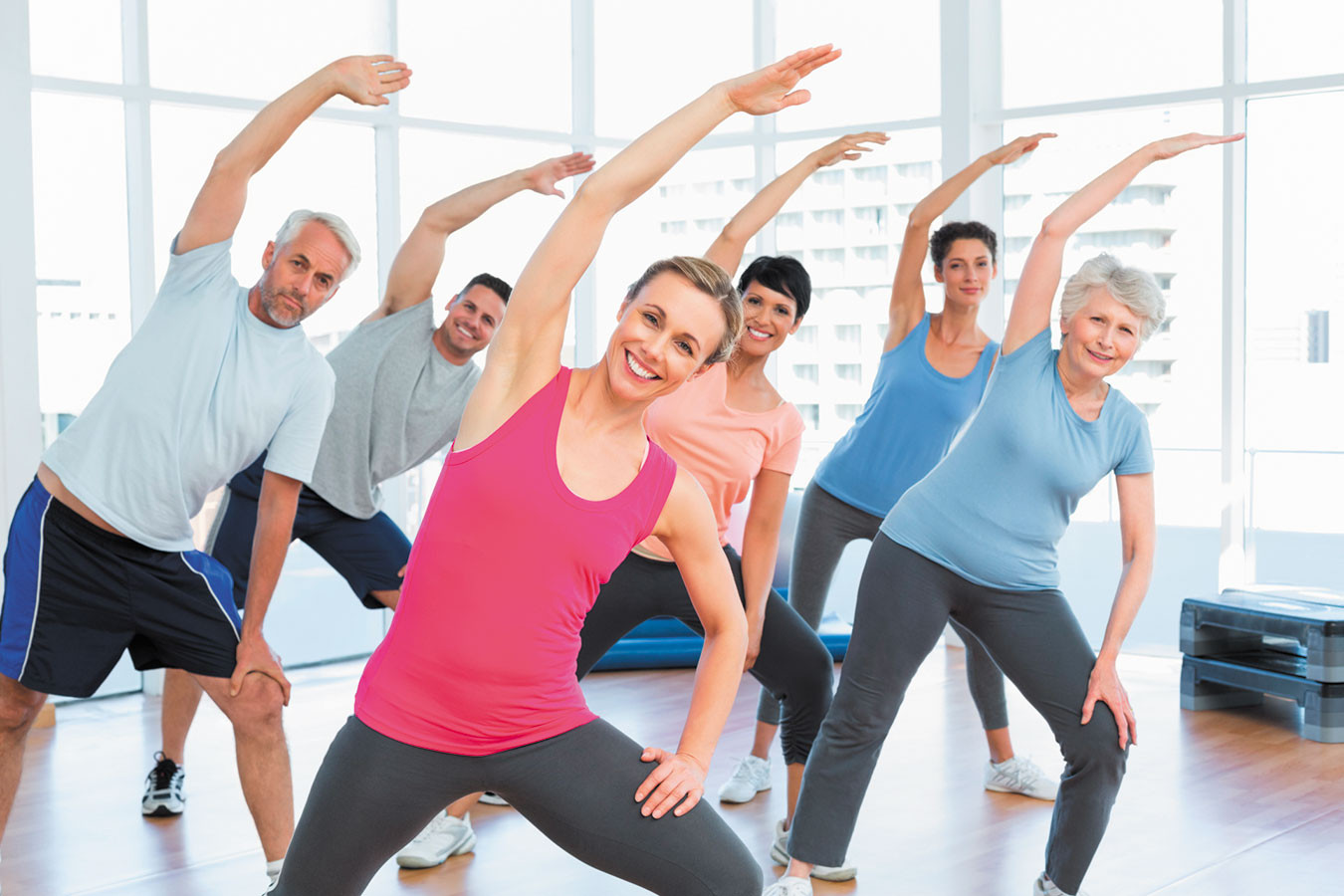Exercise entails engaging in physical activity and increasing the heart rate beyond resting levels. It is vital to maintaining both physical and mental wellness. Regular exercise offers a wide range of advantages for the body and mind, whether people choose low-intensity activities like walking or weight training or high-intensity ones like uphill cycling.
Every day exercise of any intensity is necessary for preventing a variety of illnesses and other health problems. We describe the many forms of exercise and their advantages in this post, along with the factors to take into account while creating a fitness regimen.
Types of Exercise
There are several forms of exercise, and they offer a variety of advantages for health and happiness. Exercise is typically divided into three categories:
- Aerobic exercise
- Anaerobic exercise
- Agility training
Each of these categories is explained below.
Aerobic Exercise
The goal of aerobic exercise is improvements in oxygen utilization . The majority of aerobic exercise is done for extended periods of time at average intensities.
Warming up, engaging in at least 20 minutes of aerobic activity, and cooling down are all parts of an aerobic exercise session. Large muscular groups are typically worked during aerobic activity.
The Advantages of Aerobic Exercise include:
- Reduces blood pressure,
- Increases blood flow to the muscles
- Boosts the strength of the lungs, heart, and entire body’s muscles.
- The risk of diabetes, stroke, and cardiovascular disease (CVD) is decreased
- The red blood cell count is increased to improve oxygen transportation.
- Gives persons with coronary artery disorders a better quality of life and reduces their symptoms
- Increases stamina by improving sleep hygiene and reducing the incidence of osteoporosis when done vigorously.
Anaerobic Exercise
Anaerobic exercise does not use oxygen for energy. This kind of exercise is done by people to increase their muscle mass, strength, and power. These are high-intensity exercises that shouldn’t last more than two minutes.
Among the Anaerobic Exercises are:
- Weightlifting,
- Sprinting,
- Vigorous and quick rope skipping,
- Interval training,
- Isometrics
- Any sudden burst of intense activity

While all forms of exercise are good for the heart and lungs, anaerobic exercise uses fewer calories and has fewer positive effects on cardiovascular health. However, it is more efficient than aerobic exercise for enhancing strength and muscle mass. Even while resting, the body burns more fat when there is an increase in muscle mass. The body’s most effective tissue for burning fat is muscle.
Agility Training
The goal of agility training is to increase a person’s capacity for control while accelerating, decelerating, and changing directions. It should be done on a regular basis by those who participate in sports that strongly rely on positioning, coordination, quickness, and balance.
Examples of sports that require Agility include:
- Volleyball
- Basketball
- Soccer
- Martial arts
- Wrestling
- Stretching and flexibility
- Boxing
- Tennis
- American football
- Hockey
- Badminton

Risks of not Exercising
Inactivity can raise the risk for the following health issues:
- Heart disease,
- Type 2 diabetes,
- Cancer
- Osteoporosis
Likewise it raises the possibility of early death from any cause, including the problems associated with obesity and being overweight.
Related;
The Relationship Between Sleep and Weight
Making Time to Exercise
Here are some pointers for fitting exercise into a hectic schedule:
- Check to see which automobile trips you can replace with a walk or a bike ride. Is it necessary to drive to work? If so, consider parking a half-mile away from the office and then walking the remaining distance.
- People who use public transportation to get to work might try getting off their bus or train a few stops early and walking the remaining distance.
- Instead of using the elevators or escalators at your workplace, think about walking up and down the stairs.
- Consider how much time you spend watching television, and refrain from binge-viewing. Light exercises, such as stomach crunches or jumping jacks, can help someone include more physical activity while watching television for extended periods of time.
- If a person enjoys video games, they might think about playing games that promote exercise, such the Wii’s exercise programs.
- Vigorous housework, gardening, and climbing and descending stairs while performing other household duties all count as physical exercise and can assist persons in effectively meeting the requirements.
- Exercises that people enjoy and that fit into their lifestyle are likely to be the most beneficial.
Examples of some of the Simplest Practices to incorporate into a Regular Schedule:
- Take five brisk 30-minute walks each week.
- Increase the frequency of your dog walks or join pals for jogs and walks.
- Even if it’s not every day, make an effort to include swimming in your weekly schedule.
- Join some engaging, social, and instructive exercise classes.
- Join a martial arts organization. Sessions for beginners can be relaxed and enjoyable.
- Exercise can include a slow learning curve. Spreading out workouts over the course of the week will help one gradually increase intensity.
People should make sure to drink lots of water before, during, and after exercise. If someone has a medical condition or injury that could affect their exercise routine or make it worse, consulting a doctor is a wise precaution to take.
While a mix of aerobic and anaerobic exercise offers the greatest benefits, for those who lead sedentary lifestyles, any exercise is preferable to none.
Recommendations for Beginners
Some people may find it challenging to stay active. To succeed over the long run, take into account the following advice:
- Have a clear objective: Try to always remember why you started stepping up your exercise levels, whether it was for health reasons or another reason.
- Work at your own pace because rushing things can make you more prone to injury and less likely to establish a reliable routine. Set objectives based on the objectives you set at the beginning of the regimen, and acknowledge modest victories to improve confidence.
- Change up your workouts: Alter your workout routine every few weeks. By varying the exercises, a person can target different muscle areas and broaden the benefits of their workout. If running is your favorite workout, try increasing the speed and distance you run or choosing a route with more hills.
- Form a habit of it: Even if you find an exercise regimen difficult or uninteresting at first, after a few weeks of consistency, it starts to become a habit.
- Teachers and trainers might be useful because: A personal trainer or teacher may be helpful for those who are just beginning a regimen or seeking to improve their current routine. They can inspire individuals and offer advice, assisting them in keeping track of their objectives and being devoted.
- Join a club with a friend: You might find the workouts more enjoyable if you exercise with a friend or join a fitness club together. Some people would rather avoid the stress of having others around. This is up to you.
- Pleasure yourself: If a person takes pleasure in the physical tasks that a routine entails, it will be more enduring.
Bottom Line
Regular physical activity has numerous advantages and should be a part of everyone’s daily routine to maintain good health.
